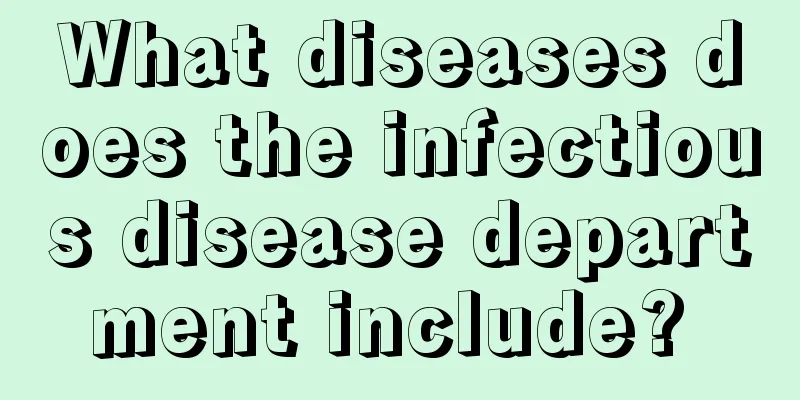What are the methods for treating lung cancer? The three most effective methods for treating lung cancer

|
Because the harm caused by lung cancer is so great, many patients suffer a lot in their hearts and their bodies are also suffering. When suffering from lung cancer, patients should seize the best time for treatment and actively undergo treatment. Below we introduce several ways to treat lung cancer, let's take a look! 1. Chemotherapy Chemotherapy is the main treatment for lung cancer, and more than 90% of lung cancers require chemotherapy. The efficacy of chemotherapy for small cell lung cancer is relatively certain regardless of early or late stages, and even about 1% of early small cell lung cancers are cured by chemotherapy. Chemotherapy is also the main means of treating non-small cell lung cancer, and the tumor remission rate of chemotherapy for non-small cell lung cancer is 40% to 50%. Chemotherapy generally cannot cure non-small cell lung cancer, but can only prolong the patient's survival and improve the quality of life. Chemotherapy is divided into therapeutic chemotherapy and adjuvant chemotherapy. Chemotherapy requires the use of different chemotherapy drugs and different chemotherapy regimens according to the different histological types of lung cancer. In addition to killing tumor cells, chemotherapy also damages normal cells in the human body, so chemotherapy needs to be carried out under the guidance of an oncologist. In recent years, the role of chemotherapy in lung cancer is no longer limited to patients with advanced lung cancer who cannot undergo surgery, but is often included in the comprehensive treatment plan for lung cancer as a systemic treatment. Chemotherapy inhibits the bone marrow hematopoietic system, mainly the decrease of white blood cells and platelets, and granulocyte colony stimulating factor and platelet stimulating factor can be used for treatment. Chemotherapy is divided into therapeutic chemotherapy and adjuvant chemotherapy. 2. Radiotherapy Radiotherapy is more effective for small cell lung cancer, followed by squamous cell carcinoma, and the worst for adenocarcinoma. The irradiation field for lung cancer radiotherapy should include the primary lesion and the mediastinum of lymph node metastasis. At the same time, it should be supplemented with drug therapy. Squamous cell carcinoma is moderately sensitive to radiation, the lesions are mainly local invasion, and the metastasis is relatively slow, so curative treatment is often used. Adenocarcinoma is less sensitive to radiation and is prone to blood metastasis, so simple radiotherapy is rarely used. Radiotherapy is a local treatment and often requires combined chemotherapy. The combination of radiotherapy and chemotherapy can be used in a synchronous chemoradiotherapy or alternating chemoradiotherapy method depending on the patient's condition. 3. Surgery Surgery is the first and main treatment for lung cancer, and it is also the only treatment that can cure lung cancer. The purpose of surgical treatment for lung cancer is: Completely remove the primary lesion of lung cancer and metastatic lymph nodes to achieve clinical cure; Removing the vast majority of the tumor to create favorable conditions for other treatments is called cytoreductive surgery; Reduction surgery: Suitable for a small number of patients, such as those with refractory pleural and pericardial effusions. By removing pleural and pericardial implant nodules, removing part of the pericardium and pleura, the clinical symptoms caused by pericardial and pleural effusions can be cured or alleviated, and life can be prolonged or the quality of life can be improved. Reduction surgery requires local and systemic chemotherapy at the same time. Surgical treatment often requires adjuvant chemotherapy and radiotherapy before or after surgery to improve the cure rate of surgery and the survival rate of patients. The five-year survival rate of surgical treatment of lung cancer is 30% to 44%; the mortality rate of surgical treatment is 1% to 2%. |
>>: What harm does lung cancer bring? 4 serious harms of lung cancer that you should know
Recommend
How long can a diaper be kept after it is opened
For many parents, in order to take better care of...
What does new metabolism mean
Metabolism is the conversion of a living organism...
The cost of chemotherapy after surgery for stage 2 colon cancer
How much does postoperative chemotherapy cost for...
These are the pros and cons of enema liquid!
Enema is generally used to treat constipation. En...
What are the causes of gastric cancer
The incidence of gastric cancer varies in differe...
What methods can help you sober up?
After getting drunk, you will have a headache and...
Rectal cancer likes these people! Be careful not to get caught
In my country, colorectal cancer is one of the mo...
Neurological tinnitus is finally cured. How to prevent it?
Tinnitus is a disease that affects people's h...
Causes of acne
If there is a problem with the body's functio...
How long can you live with advanced hepatobiliary cancer? Generally 6-12 months
How long one can live with advanced liver and gal...
What to pay attention to about skin cancer
When skin cancer occurs, many patients are in gre...
Is sleeping naked good for your health?
Is sleeping naked good for your health? This is a...
Essential drinks and food for staying up late
Staying up late has become a part of contemporary...
Radiotherapy and chemotherapy care for cardiac cancer
Chemotherapy and radiotherapy are the main method...
What are the drugs used to treat ovarian tumors
Chinese herbal medicine has a significant therape...









